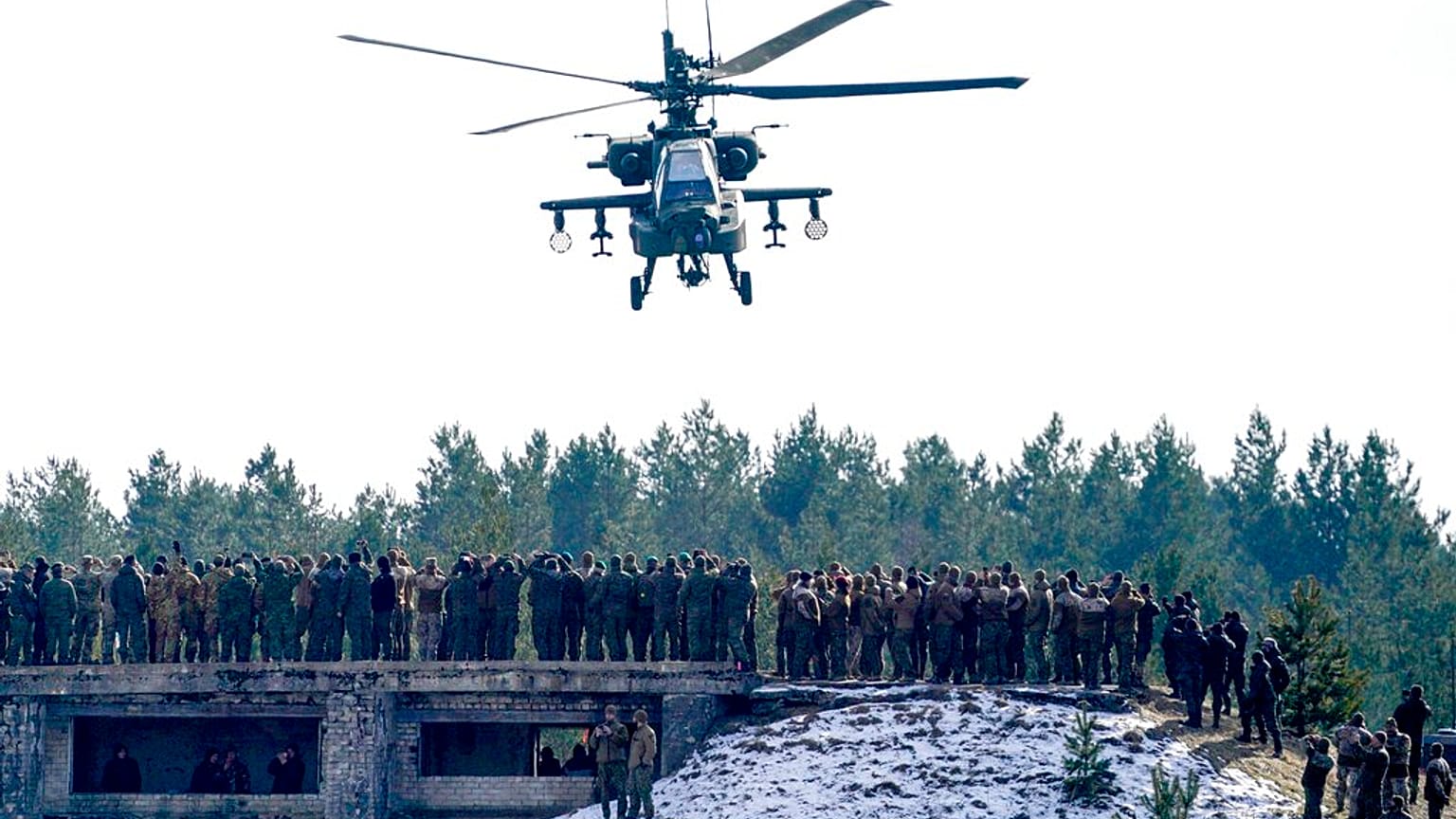The brigade is set to conduct its first large-scale field training exercise in November and demonstrate its integration into the NATO higher command structure. Full combat readiness is projected for 2026.
Defence authorities in Latvia have launched new facilities at the Adazi Military Base after the NATO Multinational Brigade was established in the Baltic country.
The Canadian-funded armoured vehicle storage and maintenance facilities, which opened on Wednesday, will house the brigade’s tanks and other armoured vehicles and provide sheltered areas for essential maintenance.
The enhancements also include a new warehouse, tent facilities, a security perimeter, and a concrete road. The investments by Canada and Spain in constructing these facilities amount to more than €7 million.
The ribbon-cutting ceremony was attended by representatives from Latvia's National Armed Forces, NATO Multinational Brigade Latvia and NATO Multinational Division HQ North, among others.
"This is a multi-million euro project. This exceeds €7m, which is just another commitment to combat the possible aggression that is happening around," Colonel James Smith, Commander of the Canadian Armed Forces Command in Latvia, said.
"We are bringing more power, more people here. We train our people, we also bring equipment. And then we also house that equipment in that infrastructure. As part of our continuing uplift to have brigade that`s operating by the end of next year," Smith added.
According to the Latvian government, Wednesday's ceremony marked the completion of infrastructure projects funded by Canada and Spain, enhancing the facilities within their respective compounds at the Adazi Military Base.
Latvia provided construction supervision to ensure the success of the projects, which began in 2023 and were completed in about a year.
"Of course, this is to let the aggressor see that our abilities are growing every day and we are becoming safer every day," said Atis Svinka, Parliamentary Secretary of the Ministry of Defence of Latvia.
The brigade is expected to conduct its first large-scale field training exercise in November and demonstrate its integration into the NATO higher command structure. Full combat readiness is projected for 2026.
NATO Multinational Brigade Latvia is led by Canada and includes troops from Albania, Czech Republic, Denmark, Iceland, Italy, Latvia, Montenegro, North Macedonia, Poland, Slovakia, Slovenia, and Spain. Sweden is also expected to join.
In March, Latvia celebrated 20 years of NATO membership. It was invited to join the alliance in 2002, along with Bulgaria, Estonia, Lithuania, Romania, Slovakia, and Slovenia. Two years later, all these countries became NATO members, marking the alliance's largest expansion in history.
Meanwhile, in Lithuania, construction is underway to develop a military base in Rukla.
The base, funded by Germany and implemented through NATO, is one of two bases in Lithuania designated to house German soldiers.
"It's about deterrence, and it's about Russia. We must be able to station a German armored brigade here in Lithuania in order to ensure the freedom of the Western nations," said Harald Gante, Commander of the Field Army of Germany.
The brigade will be home to around 2,000 soldiers and combat vehicles and is expected to become fully operational in 2027.















